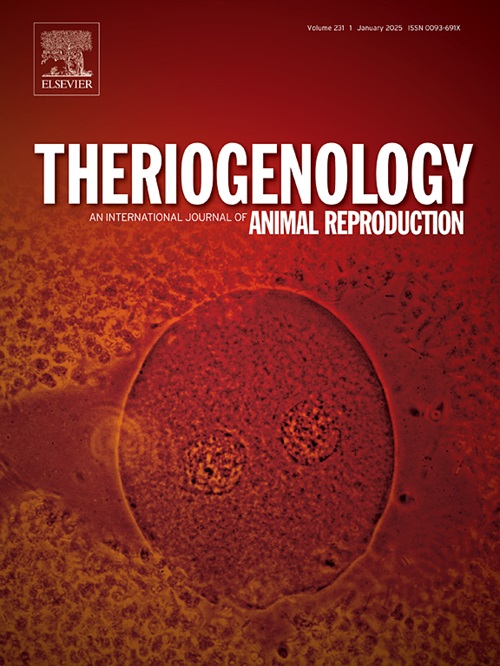North American perspectives for cattle production and reproduction for the next 20 years
IF 2.4
2区 农林科学
Q3 REPRODUCTIVE BIOLOGY
引用次数: 0
Abstract
Ruminant species are important to human society due to their ability to convert human-inedible sources of energy and protein to human-edible food. Greater efficiency of meat and milk production will require the management of the complex reproductive biology of many cattle with a limited capacity and limited budget within a smaller, hotter, and more climatically erratic land area. The over-riding drivers of new reproductive technologies in North America will be smaller economic margins, larger herd size, fewer agricultural workers per farm, and a greater reliance on automation to offset the reduced agricultural labor force. Climate change and the possibility that consumers may dictate the procedures used for animal reproductive management may present additional challenges. The successes of the past 20 years (timed AI, genomic selection for fertility in both bulls and cows, automated estrus detection, chemical and ultrasonographic pregnancy diagnosis, and gender selected semen) will be improved upon in the next 20 years as most of these technologies can be optimized further. Improving embryo technologies and increasing our understanding of embryonic loss may provide the greatest challenges for the future. Researchers must attempt to devise practical methods to release more follicles from the primordial follicle pool so that a greater number of oocytes and embryos can be harvested from individual animals. Embryonic loss continues to be an unsolved question that cuts the total number of potential offspring by nearly one-third. The identification of fertile embryos in vitro, better methods of cryopreservation, and the optimization of methods of transfer into recipient animals may improve the efficiency of advanced embryo technologies. The derivation of oocytes, sperm, and embryos from pluripotent stem cells may yield a vast supply of gametes and embryos from genetically superior animals and radically change the reproductive management in the future.
北美未来 20 年牛的生产和繁殖前景。
反刍动物能够将人类可食用的能量和蛋白质转化为人类可食用的食物,因此对人类社会非常重要。要提高肉类和奶类生产的效率,就必须在更小、更热、气候更不稳定的土地上,以有限的能力和有限的预算管理许多牛的复杂繁殖生物学。在北美,新繁殖技术的主要驱动力将是更小的经济利润、更大的牛群规模、每个农场更少的农业工人,以及对自动化的更大依赖,以抵消农业劳动力的减少。气候变化和消费者可能决定动物繁殖管理的程序可能会带来更多挑战。过去 20 年的成功经验(定时人工授精、公牛和母牛繁殖力基因组选择、自动发情检测、化学和超声波妊娠诊断以及精液性别选择)将在未来 20 年得到改进,因为这些技术中的大多数都可以进一步优化。改进胚胎技术和提高我们对胚胎损失的认识可能是未来最大的挑战。研究人员必须尝试设计出切实可行的方法,从原始卵泡池中释放出更多卵泡,以便从个体动物身上收获更多卵母细胞和胚胎。胚胎损失仍然是一个悬而未决的问题,它使潜在后代的总数减少了近三分之一。体外可育胚胎的鉴定、更好的冷冻保存方法以及将胚胎移植到受体动物体内的方法的优化,都可能提高先进胚胎技术的效率。从多能干细胞中提取卵细胞、精子和胚胎,可能会从基因优良的动物中获得大量配子和胚胎,并从根本上改变未来的生殖管理。
本文章由计算机程序翻译,如有差异,请以英文原文为准。
求助全文
约1分钟内获得全文
求助全文
来源期刊

Theriogenology
农林科学-生殖生物学
CiteScore
5.50
自引率
14.30%
发文量
387
审稿时长
72 days
期刊介绍:
Theriogenology provides an international forum for researchers, clinicians, and industry professionals in animal reproductive biology. This acclaimed journal publishes articles on a wide range of topics in reproductive and developmental biology, of domestic mammal, avian, and aquatic species as well as wild species which are the object of veterinary care in research or conservation programs.
 求助内容:
求助内容: 应助结果提醒方式:
应助结果提醒方式:


